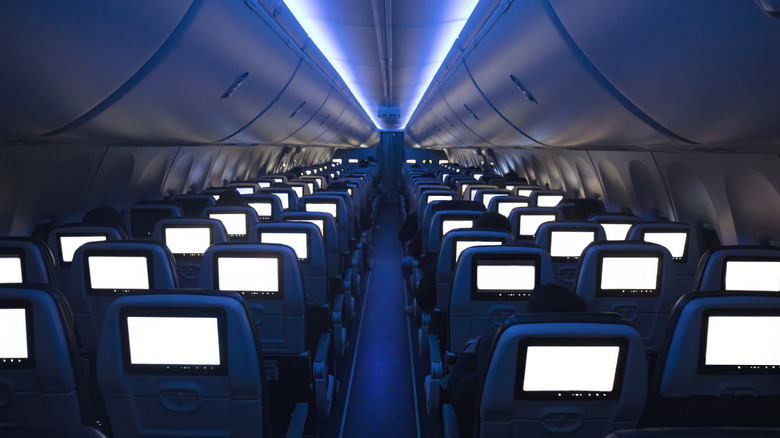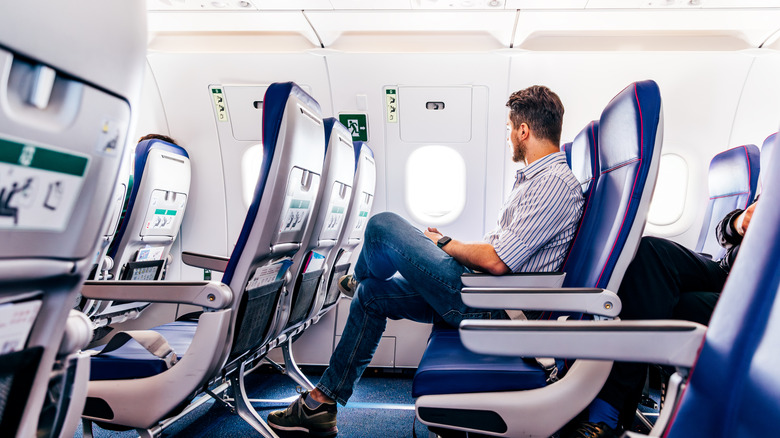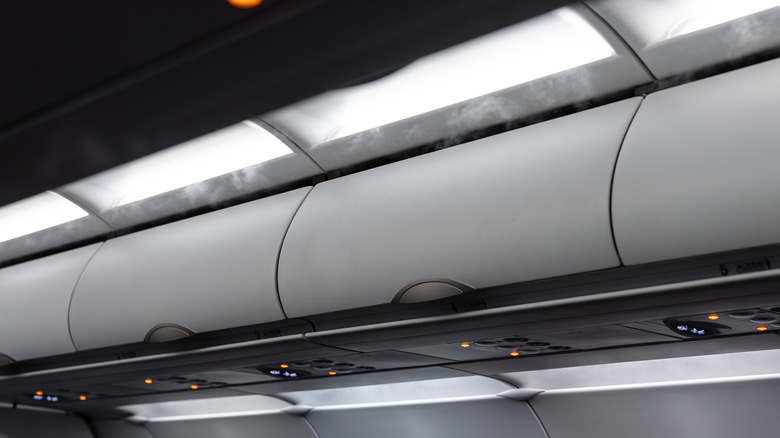How Do Airplanes Get Fresh Air (And How Much Is Recycled)
Today, airplanes are simply an accepted part of modern life, and as such, it's easy to forget how much of an engineering marvel they are. Just looking at how an airplane wing works, or how jet streams affect flights for instance, can reveal how precise and ingenious these flying vehicles are. Even without even getting into the specifics of flight itself, there's the fact that it's actually impossible for humans to breathe without assistance at the kind of altitudes reached by commercial jets, so how on Earth are we all jetting around the world without any breathing issues?
Airplanes mostly fly at or above 30,000 feet, which allows for better fuel efficiency and avoids bad weather and turbulence lower down. But at such a height, the minimum oxygen concentration for humans to breathe simply can't be maintained without additional measures being taken. As such, aircraft cabins are pressurized, typically to a level matching an altitude of around 8,000 feet.
But what does this process actually involve and how, if the air outside the plane doesn't contain enough oxygen to keep humans alive, are planes able to maintain a consistently safe atmosphere in their cabins? Well, it's all part of the pressurization process, yet another engineering triumph without which commercial air travel just wouldn't be possible.
Airplane cabins have a combination of fresh and filtered air
To maintain a comfortable cabin pressure like that found around 8,000 feet, pressurized air, otherwise known as conditioned or "bleed air," is pumped directly into the cabin. This air originates from the plane's turbine engines which use a mixture of fuel and compressed air to provide thrust. Some of this compressed air is siphoned off for other uses like de-icing the wings, pressurizing the water, and for breathable air in the cabin. This process continues throughout the flight, but there's another aspect to maintaining a comfortable cabin: filtering the existing air inside the aircraft.
About half of the airplane cabin's air is made up of the conditioned air from outside the aircraft (which is naturally sterile due to the atmospheric conditions outside) and the other half is air that is passed through HEPA filters. In the wake of the global pandemic, air quality has become a larger concern among travelers, and for good reason. As a result, HEPA filtering — a process used in hospital operating theaters which removes 99.993% of bacteria and viruses — has become a household word. Unless we're flying on older or much smaller aircraft, then, we're breathing air that's been through a HEPA filtering process.
Put simply, airplane air is roughly 50% conditioned air from outside the aircraft and 50% recycled air that was already inside the cabin. Of course, there's more going on that ensures that cabin air is some of the safest you can breathe.
Airplane air is constantly cleaned, making it remarkably safe
Airplane cabin air mixes fresh, conditioned air from the outside of the plane with recycled, filtered air from the cabin. But this air is also completely changed every three minutes or so, or 20–30 times an hour.
When cabin air exits the cabin via air grills on the floor, half of it is released from the plane, while the other half is passed through the HEPA filters for recirculation. This filtered air is then combined with the conditioned "bleed air" from outside the airplane and sent back into the cabin, where it's pumped from the ceiling at a speed of roughly 3 feet per second, before being sucked back out via the floor grills in an ongoing process that doesn't stop until the plane lands.
As such, contrary to popular understanding, the air on a plane is actually some of the safest air you're likely to breathe. Due to the combination of sterile air from outside the aircraft, HEPA filters, and the fact that air flows from top to bottom, rather than down the length of the plane, the air quality on planes is remarkably safe, and much cleaner than air in other indoor environments such as restaurants or stores.


